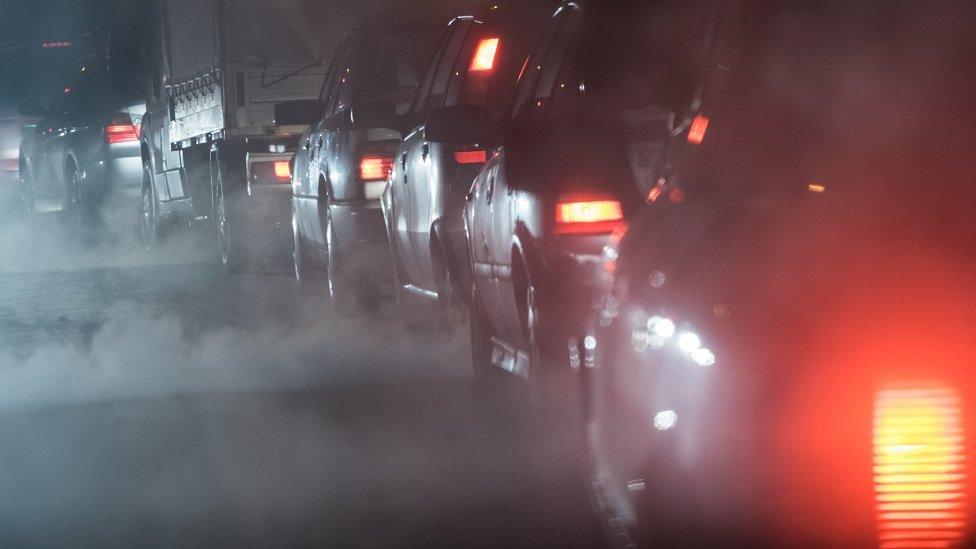Scotland's most-polluted streets improve during lockdown
- Published

Hope Street in Glasgow has been the most polluted street in Scotland for four consecutive years
Air pollution on Scotland's most-polluted streets has dropped massively since lockdown began, figures show.
The levels of nitrogen oxides have reduced significantly since measures to tackle coronavirus were introduced.
Nitrogen dioxide (NO2), released from car exhausts, is a serious air pollutant and indirectly contributes to global warming.
But campaigners have warned against viewing short-term improvements as a "silver lining" in the pandemic.

Analysis of data from Air Quality Scotland by BBC Scotland found an average drop of 46% in NO2 on Scotland's most-polluted streets, with some falling by as much as 63%.
In 2019, Hope Street in Glasgow, St John's Road in Edinburgh, Seagate and Lochee Road in Dundee and Academy Street in Inverness all breached the legal limit of an average 40 micrograms of NO2 per cubic metre (ug/m3).
All five streets have seen reductions since lockdown came into force on 23 March, compared with the same period last year.

Glasgow's Hope Street, which has been named Scotland's most polluted street for the past four years, saw its daily NO2 average fall to 26.91ug/m3 between 24 March to 30 April, compared with 63.16ug/m3 in the same period last year.
Meanwhile, levels of nitrogen oxide (NOx) - that is a combination of all nitrogen gases - has also seen a dramatic reduction, according to figures compiled by environmental consultancy Ricardo, which have been adjusted to account of variations caused by the weather.
On Hope Street, NOx levels have fallen by 80% while in St John's Road in Edinburgh they have fallen by 76%.
Nicolson Street in Edinburgh also broke the legal limit for NO2 in 2019, but data for the full period in 2020 is not yet available.
Friends of the Earth Scotland said such improvements were not universal across Scotland - and some locations, such as areas around supermarkets, may be experiencing more traffic as demand for food had increased.
Towards the end of April, car travel across the UK had slowly started to increase as people struggled to stick to lockdown measures.
Friends of the Earth Scotland's air pollution campaigner Gavin Thomson has said any short-term improvements which come at an "enormous human and economic cost" would not bring many health benefits.
He has called for a change to the transport system and ways of working to reduce pollution after lockdown, which could also alleviate some of the underlying conditions which make people more vulnerable to diseases such as coronavirus.
A recent AA survey found that 52% of Scots believed their driving habits were unlikely to change after lockdown, but one in five said they would drive less.
- Published8 April 2020

- Published19 January 2020
